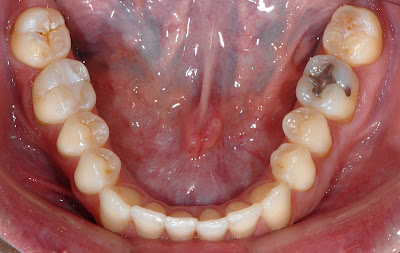I just finished my move to South Florida and life has been crazy, but it has allowed me the time to sit and think for a while about the whole "digital photography" thing. You see, there are a ton of reasons to take great images and having taught for so many years has allowed me to interact with many of you and learn a bit more about why you go through the effort and energy of getting exceptional images.
Whether it's an anterior esthetic image or a picture of a lateral arch for purely functional reasons, taking a great image is the goal whenever we pick up the camera, however, there is great debate over almost every aspect of digital dental photography.
There is even great debate over what makes a "great" image. Is it the composition, the subject matter, the pose, the esthetics of it, the clinical value or perhaps even the marketability of the particular image? My answer: I don't think that any one person can define what makes a great image. It's like art. It's subjective. However, for specific shots, there are objective criteria by which we can judge them. For instance, if we were to look at a mandibular arch image, we would want agree that there are certain things that make it "exceptional". They could include:
Arch centered
Entire arch visible
Looking straight down on the arch
Tongue not covering occlusal surface
Dry arch
Lower lip out of the way
Only the mirror image visible (not other teeth)
Of course, there are many other criteria we could add, but these are several that would be relatively non negotiable among most dentists. The question is, when we take a mandibular image, do we keep all of these ties in mind when we shoot the image? Are we actually sitting down and evaluating our images using these criteria? Do we "score" ourselves so that we can get better images next time? If our assistants are shooting images, do we ever sit down and grade their work? Try something on Monday. Take a single image and list all of the criteria by which the image should be graded. Grade each of your criteria based on a point value (ex: 1-10) but list what you consider to be a "passing" and "exceptional" score before you grade.
Of course, there's a bit of subjectivity here, but in the end, if you mark a 6 instead of a 7 or 8 on a criteria or two, it isn't going to destroy the value of everything.
Here's a random example from my library of images. Assuming we give a 1-10 (10 being best) for the aforementioned criteria, let's grade it.
Arch centered 10 I don't think I could have improved it
Entire arch visible 8 I would like to see the retromolar pads
Looking straight down on the arch 9 Ever so slightly tilted backwards and not straight on
Tongue not covering occlusal surface 10 Not even close to being in the way
Dry arch 9 Pretty dry, but I could have done better
Lower lip out of the way 5 Not done very well
Only the mirror image visible (not other teeth) 10
Total Score: 61/70=87% B+
Not bad, but I can definitely improve
I know it takes time, but it's one of the few ways to get better. Try it randomly from time to time and see how you do. You may find that certain issues (like having the arch centered) are things that you do really well and other things (like lip out of the way) may be more challenging.
Only by objectively evaluating your images can you figure out where you need work and do that. Your images are sure to get way better.
Best Wishes,
Glenn

